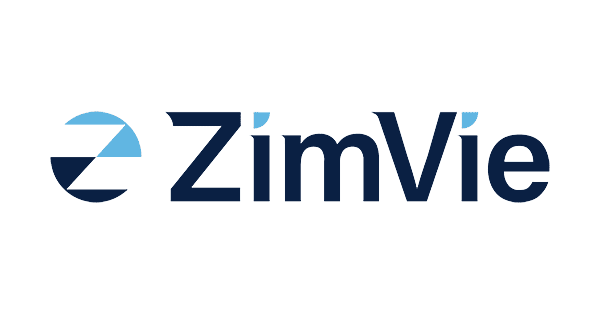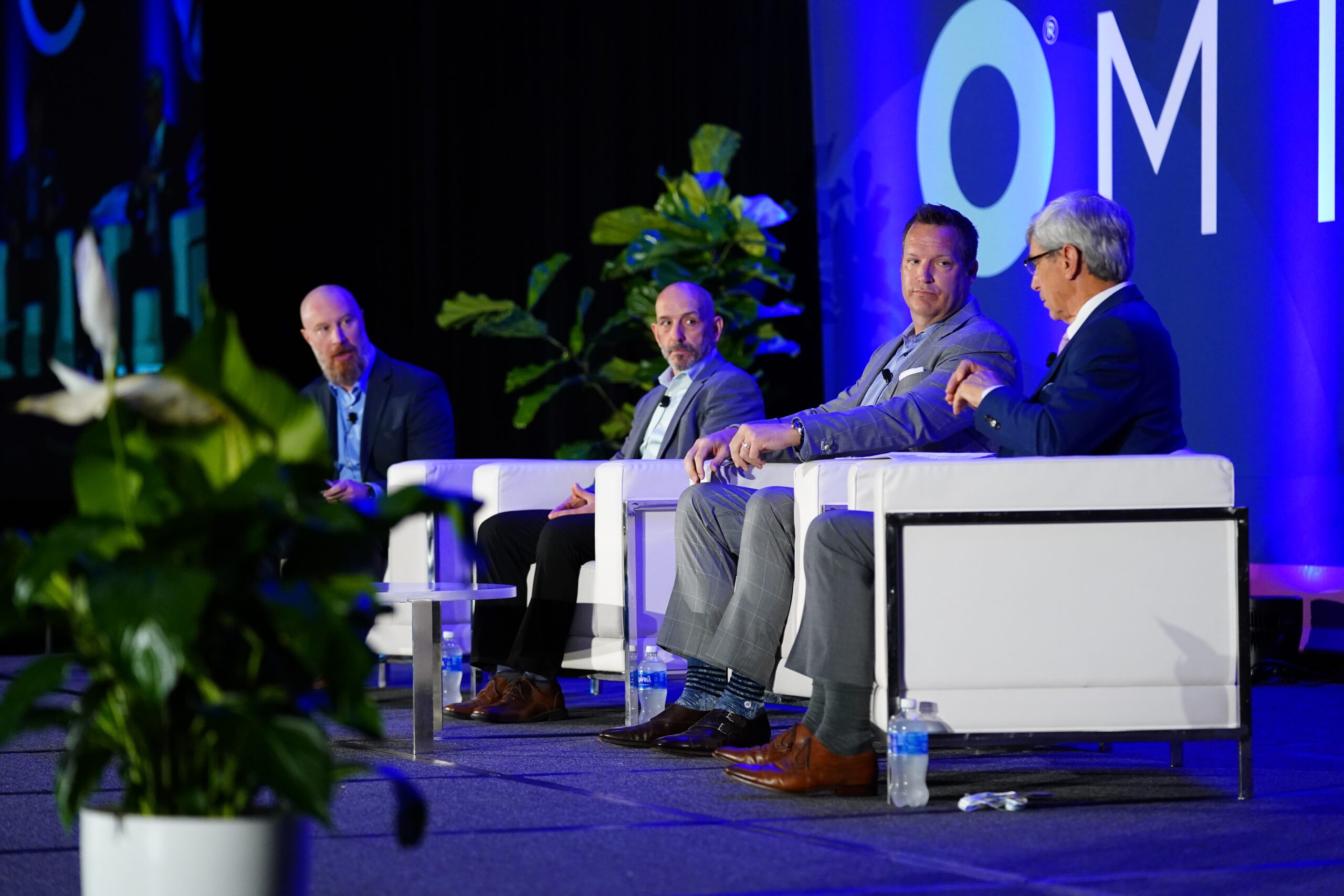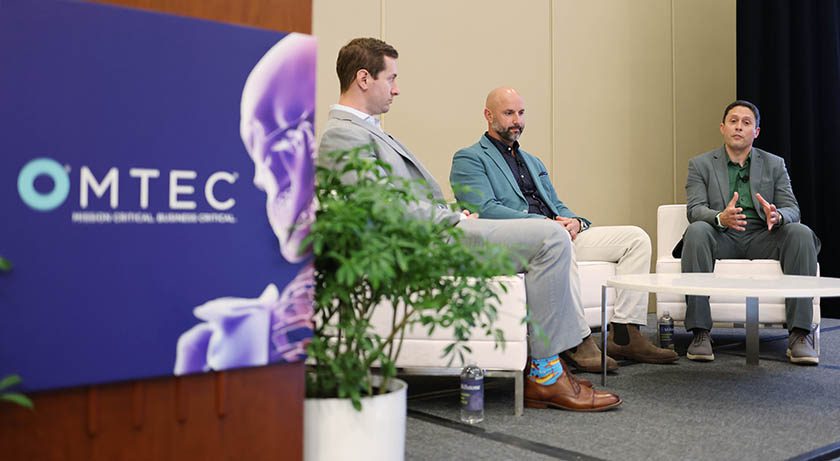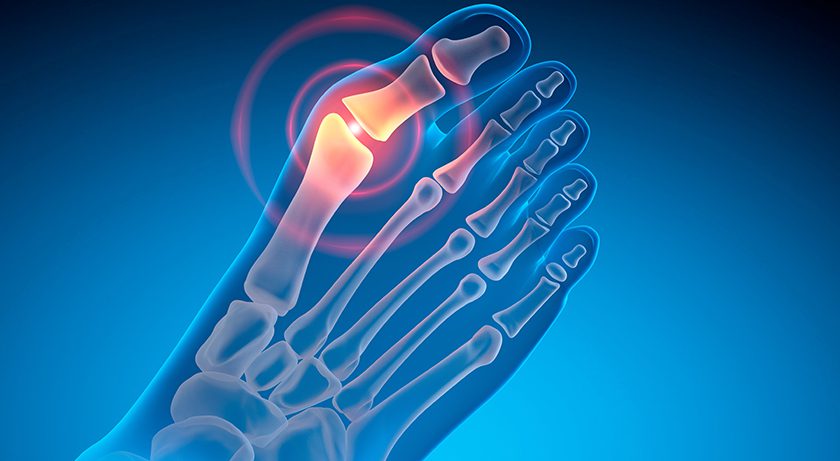

 Copy to clipboard
Copy to clipboard 
Zimmer Biomet officially spun off its spine and dental business on March 1, giving life to ZimVie. The new company enters the market with just over $1 billion in annual revenue, about 54% of which is spine-related.
ZimVie’s new CEO Vafa Jamali is tasked with growing a business that was underprioritized and declining under its previous ownership. We sat down with Mr. Jamali to discuss his vision for ZimVie, trends he sees in the spine market and how the company will prioritize its portfolio with both implants and technology.
Mr. Jamali recently served as Chief Commerical Officer of Rockley Photonics. Prior to that, he was Senior Vice President and President of Respiratory, Gastrointestinal & informatics (RGI) at Medtronic. RGI was a $3 billion business under Mr. Jamali’s leadership. As we started our conversation, he noted that he has developed a fondness for carveouts throughout his career.
“I’ve known big companies and what happens to assets when they’re not the priority of the company,” Mr. Jamali said, noting that they often offer value. “The challenge of going in, finding the assets and bringing the people who want to build them and drive them, and then find growth when others didn’t find it. It becomes just a great opportunity, a great professional opportunity.”
Often, the decision might look risky, he said. But retrospectively, it’s usually a great one. That’s the mentality that Mr. Jamali and his leadership team bring to ZimVie as they find their place in the $9 billion spine market.
ORTHOWORLD: Has managing through a pandemic and unprecedented market conditions over the last two years impacted how you think about or approach your leadership?
Mr. Jamali: Yes. You have to become much more flexible in your approach and look at situations and what you can gain from them. I had to hire 14 leaders and an entire board virtually. In the past, we probably would’ve taken a long time to do that.
With technology, you just get much more comfortable managing differently. And again, if you use that to your advantage, it can be quite effective. Albeit, none of it replaces face to face, but I think we learned a lot about how we can handle things and how we can manage different situations.
ORTHOWORLD: My observation is that the industry learned just how productive it could still be, even in the face of these many challenges. And as we think about the market and spine specifically, how are you personally thinking about 2022 in terms of the market recovery – be it from a new variant or supply chain issues, inflation, nursing shortages and all those factors?
Mr. Jamali: We’re cautious about recovery because we still have a hospital end-user where they have to triage their most urgent cases.
The more elective you are, the more likely you will be down-prioritized from something urgent, which I think is absolutely the right thing for communities and patients. For us, we ought to continue to be more flexible in terms of where our procedures are done and how they’re done. That’s the kind of the market side of it.
Then we have this other trend: staffing shortages. I would characterize that both as a nursing shortage and a labor shortage.
When we were ramping up a couple of our facilities, we were competing hard with neighboring companies. We haven’t felt that for a long time. We haven’t had that need to be competitive. But again, all these test your flexibility and your creativity and your value proposition to the employees who want to come here.
Then, how do you manage possibly not having staff ready to do the procedure? The hospitals are doing a pretty good job of managing that right now.
ORTHOWORLD: Are you comfortable with where your facilities are at with labor, or is that still a problem that you’re going to work through on an ongoing basis?
Mr. Jamali: I’m extraordinarily happy with who we’ve been able to hire at ZimVie in terms of the team that’s looking after these two businesses. We were able to figure out how to manage these tighter labor markets, where you’re competing with big employers next door. But again, because we were flexible, because we were looking at things differently, and because we started to measure what we’re offering differently than we were before. So we’re quite happy.
ORTHOWORLD: If I understand ZimVie’s at least near-term model for spine, it’s to use fusion to fund your creation of these markets. In a lot of ways, you’re sort of trailblazing into Mobi-C and Tether. So what are some of the things that you’re going to have to contend with? What about those markets makes it exciting and worth doing?
Mr. Jamali: Spine is a crowded market, and the biggest segment of that market is the core and complex, the rods and screws. That market is occupied and it’s crowded. For us, a smaller player, it’s really important for us to be very nimble and find areas where other people aren’t.
We have a lot of loyalty with our core and complex procedures. We intend to fill those gaps where we need to, but then what we think is more interesting for our company is to be able to grow pediatric scoliosis and the Mobi-C cervical disc, because in both of those markets the bigger opportunity is not taking someone else’s share.
The bigger opportunity is actually growing that market and providing better outcomes for patients. If you can combine those two things where your business grows, you create a market, you define a market, and you get patients to have better outcomes. That’s where we think we can compete better.
ORTHOWORLD: On the challenge side, I read a bit about reimbursement, certainly on Mobi-C. What is the pathway for ZimVie to maybe turn some of that reimbursement around and get it to be more favorable?
Mr. Jamali: I think that it’s a focused effort. When you launch a product, you have to be focused on how you approach reimbursement.
A lot of it is around what evidence you present to show that the overall outcomes and the overall cost are favorable. Because, often, when you look at reimbursement decisions, it’s not based on the price of the device. It has to be the whole package. How do we present that as a strategy on its own?
I have experience of being able to do that effectively and to drive the system costs down. What’s important is that you just can’t add cost. You have to take away overall costs.
Part of those decisions could be moving from a facility, which is a higher-cost place to have a procedure done, to a lower-cost setting and get the same outcomes. Those are some of the things that you would look at.
ORTHOWORLD: Your comments about getting it into a lower-cost setting are interesting. Many larger companies are giving ASCs more focus, but it’s sort of hard to pin down. How penetrated is spine in ASCs? Do you think it’s 5% or 10%?
Mr. Jamali: I don’t know the exact penetration, but it’s less than some of the other orthopedic specialties. Right? It means, though, that it is growing, and we have to be focused on it.
The trend is really, really important for us. Again, if we want to be effective, we must be nimble and agile and address these things early.
ORTHOWORLD: I want to go back to what you said a moment ago about not adding cost. It seems like for robotics, they’re adding cost in many cases. And it doesn’t sound like ZimVie is looking at robotics at this point. But what are some of the enabling technologies you think are a good fit and that you’re excited about?
Mr. Jamali: I am an advocate of tech in medical devices. I believe that there will be a time when we’ll say, ‘We can’t believe we didn’t use robotics for this procedure.’ But I think we should innovate around the procedure to make the workflow better and make the outcomes better.
What we’ve missed so far in spine is that our outcomes haven’t improved dramatically, and the workflows are often a little bit more complicated. That combination is not ideal.
What we’re looking at is, could we find a procedure where there’s some level of technical difficulty or visualization difficulty where you think that if you innovate or if you add tech to it, and maybe a lighter form of tech, both in terms of cost and just footprint, and you can get some workflow benefit and provide the very necessary capabilities that tech provides. Then you have a winning solution.
It’s more about innovating around a procedure versus having a robot for the sake of having a robot, right? Robots are largely underused right now. I think it’s less than 5% utilization in procedures. There’s room to grow.
ORTHOWORLD: I think the efficient workflow piece is important. Clearly, the nursing shortage isn’t just because of COVID; it’s a long-time trend that has been developing. But as we look out several years at the exploding patient population, it doesn’t seem like healthcare resources are going to keep up at that same pace. So what are some other ways that device companies can help regain that balance and help healthcare workers continue to provide that high level of care?
Mr. Jamali: If you truly focus on not what is the standard of care today, but what it could be, and if you said that you’ll focus on procedures and innovations that both improve workflow and outcomes, you should take the down the drain on the system, right? You’re saying, ‘I can do it more effectively, quicker, and I get more standard outcomes, and you don’t come back for your second fusion procedure.’
But that needs evidence, right? Sometimes the technology itself might cost more. It’s only okay to cost more if you take something else out of it, and that something else should be a return or an efficiency or an ability to turn the O.R. quicker, etc.
That’s how I see us being able to innovate around this specialty.
ORTHOWORLD: To wrap up our conversation, what is something that you really want folks to know about ZimVie as you embark on this new identity?
Mr. Jamali: We’re very focused on innovations. We’re focused on areas where we think we can make an impact and areas where others aren’t, so we will find our own lanes.
We have a very healthy dental business as well that helps us get this stabilization quicker. We have a dental and a spine business helping us set up infrastructure OUS. It’s helping us get through some of the changes that we need to make.
Ultimately, I see us being very focused on core key drivers and operationally much better than we’ve been in the past. So I’m really looking forward to the next few years.
Zimmer Biomet officially spun off its spine and dental business on March 1, giving life to ZimVie. The new company enters the market with just over $1 billion in annual revenue, about 54% of which is spine-related.
ZimVie’s new CEO Vafa Jamali is tasked with growing a business that was underprioritized and declining under its...
Zimmer Biomet officially spun off its spine and dental business on March 1, giving life to ZimVie. The new company enters the market with just over $1 billion in annual revenue, about 54% of which is spine-related.
ZimVie’s new CEO Vafa Jamali is tasked with growing a business that was underprioritized and declining under its previous ownership. We sat down with Mr. Jamali to discuss his vision for ZimVie, trends he sees in the spine market and how the company will prioritize its portfolio with both implants and technology.
Mr. Jamali recently served as Chief Commerical Officer of Rockley Photonics. Prior to that, he was Senior Vice President and President of Respiratory, Gastrointestinal & informatics (RGI) at Medtronic. RGI was a $3 billion business under Mr. Jamali’s leadership. As we started our conversation, he noted that he has developed a fondness for carveouts throughout his career.
“I’ve known big companies and what happens to assets when they’re not the priority of the company,” Mr. Jamali said, noting that they often offer value. “The challenge of going in, finding the assets and bringing the people who want to build them and drive them, and then find growth when others didn’t find it. It becomes just a great opportunity, a great professional opportunity.”
Often, the decision might look risky, he said. But retrospectively, it’s usually a great one. That’s the mentality that Mr. Jamali and his leadership team bring to ZimVie as they find their place in the $9 billion spine market.
ORTHOWORLD: Has managing through a pandemic and unprecedented market conditions over the last two years impacted how you think about or approach your leadership?
Mr. Jamali: Yes. You have to become much more flexible in your approach and look at situations and what you can gain from them. I had to hire 14 leaders and an entire board virtually. In the past, we probably would’ve taken a long time to do that.
With technology, you just get much more comfortable managing differently. And again, if you use that to your advantage, it can be quite effective. Albeit, none of it replaces face to face, but I think we learned a lot about how we can handle things and how we can manage different situations.
ORTHOWORLD: My observation is that the industry learned just how productive it could still be, even in the face of these many challenges. And as we think about the market and spine specifically, how are you personally thinking about 2022 in terms of the market recovery – be it from a new variant or supply chain issues, inflation, nursing shortages and all those factors?
Mr. Jamali: We’re cautious about recovery because we still have a hospital end-user where they have to triage their most urgent cases.
The more elective you are, the more likely you will be down-prioritized from something urgent, which I think is absolutely the right thing for communities and patients. For us, we ought to continue to be more flexible in terms of where our procedures are done and how they’re done. That’s the kind of the market side of it.
Then we have this other trend: staffing shortages. I would characterize that both as a nursing shortage and a labor shortage.
When we were ramping up a couple of our facilities, we were competing hard with neighboring companies. We haven’t felt that for a long time. We haven’t had that need to be competitive. But again, all these test your flexibility and your creativity and your value proposition to the employees who want to come here.
Then, how do you manage possibly not having staff ready to do the procedure? The hospitals are doing a pretty good job of managing that right now.
ORTHOWORLD: Are you comfortable with where your facilities are at with labor, or is that still a problem that you’re going to work through on an ongoing basis?
Mr. Jamali: I’m extraordinarily happy with who we’ve been able to hire at ZimVie in terms of the team that’s looking after these two businesses. We were able to figure out how to manage these tighter labor markets, where you’re competing with big employers next door. But again, because we were flexible, because we were looking at things differently, and because we started to measure what we’re offering differently than we were before. So we’re quite happy.
ORTHOWORLD: If I understand ZimVie’s at least near-term model for spine, it’s to use fusion to fund your creation of these markets. In a lot of ways, you’re sort of trailblazing into Mobi-C and Tether. So what are some of the things that you’re going to have to contend with? What about those markets makes it exciting and worth doing?
Mr. Jamali: Spine is a crowded market, and the biggest segment of that market is the core and complex, the rods and screws. That market is occupied and it’s crowded. For us, a smaller player, it’s really important for us to be very nimble and find areas where other people aren’t.
We have a lot of loyalty with our core and complex procedures. We intend to fill those gaps where we need to, but then what we think is more interesting for our company is to be able to grow pediatric scoliosis and the Mobi-C cervical disc, because in both of those markets the bigger opportunity is not taking someone else’s share.
The bigger opportunity is actually growing that market and providing better outcomes for patients. If you can combine those two things where your business grows, you create a market, you define a market, and you get patients to have better outcomes. That’s where we think we can compete better.
ORTHOWORLD: On the challenge side, I read a bit about reimbursement, certainly on Mobi-C. What is the pathway for ZimVie to maybe turn some of that reimbursement around and get it to be more favorable?
Mr. Jamali: I think that it’s a focused effort. When you launch a product, you have to be focused on how you approach reimbursement.
A lot of it is around what evidence you present to show that the overall outcomes and the overall cost are favorable. Because, often, when you look at reimbursement decisions, it’s not based on the price of the device. It has to be the whole package. How do we present that as a strategy on its own?
I have experience of being able to do that effectively and to drive the system costs down. What’s important is that you just can’t add cost. You have to take away overall costs.
Part of those decisions could be moving from a facility, which is a higher-cost place to have a procedure done, to a lower-cost setting and get the same outcomes. Those are some of the things that you would look at.
ORTHOWORLD: Your comments about getting it into a lower-cost setting are interesting. Many larger companies are giving ASCs more focus, but it’s sort of hard to pin down. How penetrated is spine in ASCs? Do you think it’s 5% or 10%?
Mr. Jamali: I don’t know the exact penetration, but it’s less than some of the other orthopedic specialties. Right? It means, though, that it is growing, and we have to be focused on it.
The trend is really, really important for us. Again, if we want to be effective, we must be nimble and agile and address these things early.
ORTHOWORLD: I want to go back to what you said a moment ago about not adding cost. It seems like for robotics, they’re adding cost in many cases. And it doesn’t sound like ZimVie is looking at robotics at this point. But what are some of the enabling technologies you think are a good fit and that you’re excited about?
Mr. Jamali: I am an advocate of tech in medical devices. I believe that there will be a time when we’ll say, ‘We can’t believe we didn’t use robotics for this procedure.’ But I think we should innovate around the procedure to make the workflow better and make the outcomes better.
What we’ve missed so far in spine is that our outcomes haven’t improved dramatically, and the workflows are often a little bit more complicated. That combination is not ideal.
What we’re looking at is, could we find a procedure where there’s some level of technical difficulty or visualization difficulty where you think that if you innovate or if you add tech to it, and maybe a lighter form of tech, both in terms of cost and just footprint, and you can get some workflow benefit and provide the very necessary capabilities that tech provides. Then you have a winning solution.
It’s more about innovating around a procedure versus having a robot for the sake of having a robot, right? Robots are largely underused right now. I think it’s less than 5% utilization in procedures. There’s room to grow.
ORTHOWORLD: I think the efficient workflow piece is important. Clearly, the nursing shortage isn’t just because of COVID; it’s a long-time trend that has been developing. But as we look out several years at the exploding patient population, it doesn’t seem like healthcare resources are going to keep up at that same pace. So what are some other ways that device companies can help regain that balance and help healthcare workers continue to provide that high level of care?
Mr. Jamali: If you truly focus on not what is the standard of care today, but what it could be, and if you said that you’ll focus on procedures and innovations that both improve workflow and outcomes, you should take the down the drain on the system, right? You’re saying, ‘I can do it more effectively, quicker, and I get more standard outcomes, and you don’t come back for your second fusion procedure.’
But that needs evidence, right? Sometimes the technology itself might cost more. It’s only okay to cost more if you take something else out of it, and that something else should be a return or an efficiency or an ability to turn the O.R. quicker, etc.
That’s how I see us being able to innovate around this specialty.
ORTHOWORLD: To wrap up our conversation, what is something that you really want folks to know about ZimVie as you embark on this new identity?
Mr. Jamali: We’re very focused on innovations. We’re focused on areas where we think we can make an impact and areas where others aren’t, so we will find our own lanes.
We have a very healthy dental business as well that helps us get this stabilization quicker. We have a dental and a spine business helping us set up infrastructure OUS. It’s helping us get through some of the changes that we need to make.
Ultimately, I see us being very focused on core key drivers and operationally much better than we’ve been in the past. So I’m really looking forward to the next few years.

You are out of free articles for this month
Subscribe as a Guest for $0 and unlock a total of 5 articles per month.
You are out of five articles for this month
Subscribe as an Executive Member for access to unlimited articles, THE ORTHOPAEDIC INDUSTRY ANNUAL REPORT and more.
ME
Mike Evers is a Senior Market Analyst and writer with over 15 years of experience in the medical industry, spanning cardiac rhythm management, ER coding and billing, and orthopedics. He joined ORTHOWORLD in 2018, where he provides market analysis and editorial coverage.







